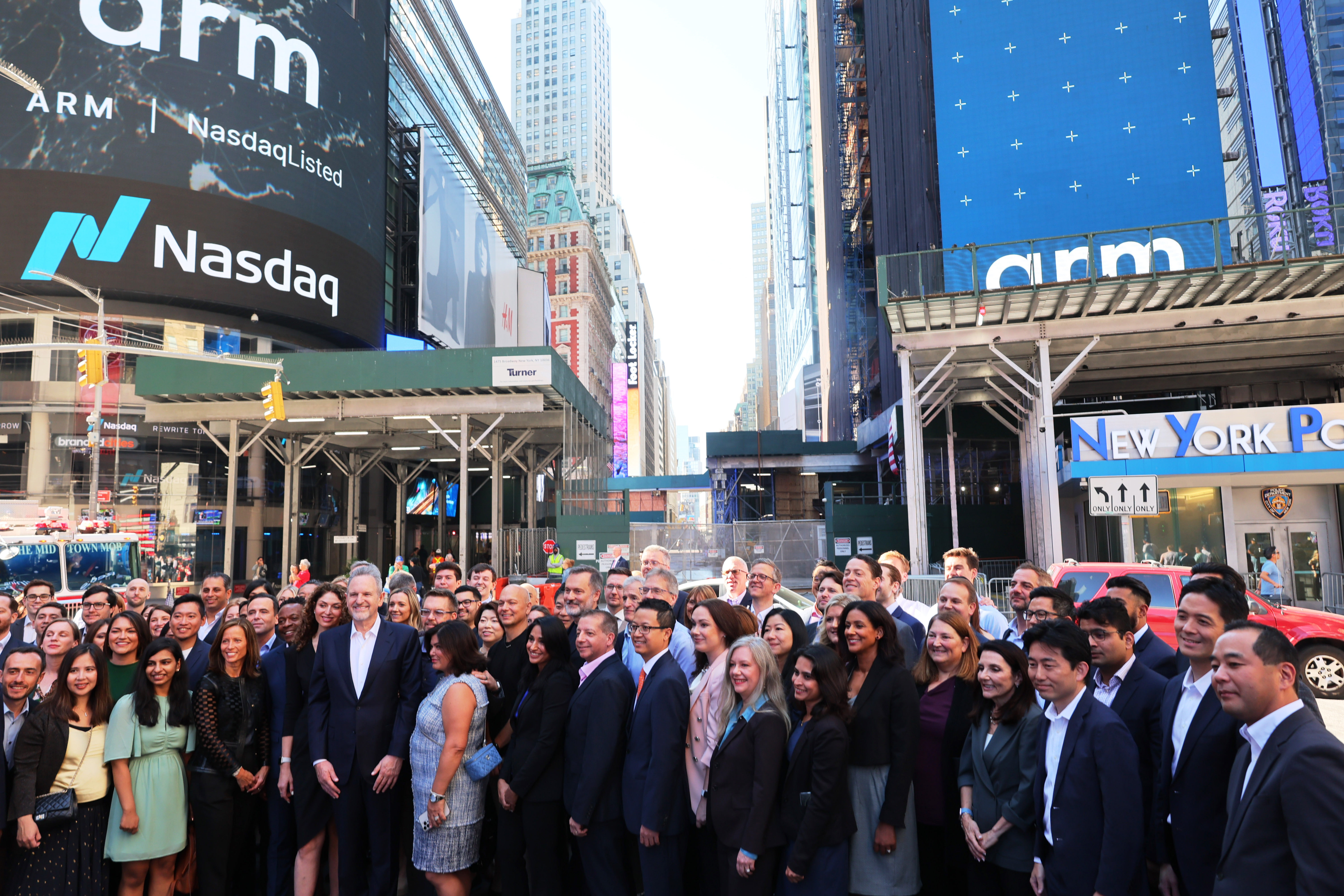“The growth of AI, I believe, is the growth of Arm,” Arm EVP and Chief Commercial Officer Will Abbey told me this morning, minutes before the chip designer’s stock started trading on Nasdaq. While AI may not always be the first thing you think about when you hear about Arm, when I asked Abbey about what’s next for the company, he immediately jumped to AI. “When I think about what’s next, firstly, AI runs on Arm today — and AI is everywhere. So when I think about what’s next, what that means for us is as AI continues to be more pervasive, I think that demands for more compute, more power efficiency and a software ecosystem that’s relevant for AI will drive us to continue to deliver in those areas of compute, power efficiency and ecosystem.”
He cited Nvidia’s Grace Hopper superchip as an example for this. It features 72 of Arm’s Neoverse core, combined with Nvidia’s H100 Tensor Core GPU. It was, of course, this kind of synergy that led Nvidia to try to acquire Arm, even though the deal later fell through due to regulatory concerns. “We believe that whether it’s training which is taking place today, which will lead to inferencing downstream, the ARM architecture is ideal to enable AI at scale,” said Abbey.

Arm Holdings CEO Rene Haas poses for a photo with members of leadership outside of the Nasdaq MarketSite on September 14, 2023 in New York City. Arm, the chip design firm that supplies core technology to companies that include Apple and Nvidia, priced its initial public offering at $51 a share. (Photo by Michael M. Santiago/Getty Images)
With well over 250 billion Arm-based chips shipped so far, according to the company’s own data, the company obviously has a massive install base on the hardware side, but one topic Abbey came back to repeatedly during our conversation was the importance of a software ecosystem around these chips as a differentiator between Arm and its competitors.
That’s something the company has invested in heavily in recent years. Indeed, in its latest factsheet, Arm highlights that it invested 10 million engineering hours to create the base software and tools for chips with its Armv8 processors, it invested 30 million hours for the software tooling around its Armv9 chips.
“In the markets that we are focusing on, it’s not just about a hardware solution,” he said. “It’s the ability to make sure that the developers can access your architecture in an easy and accessible way. It’s the developer community which is critical. When you develop an application, you want to make sure that that application runs on as many devices as possible. For us, our ability to make sure that we’re developing best-in-class products, but also ensuring that developers can access us in an easy and accessible way — the moat between what we do and others is pretty, pretty huge.”
Talking about hiring, Abbey noted that this was never really a problem for Arm, but that the IPO would “elevate ARM to its rightful position as a tech employer” since it creates “a bigger shopping window for engineers to want to join Arm.”
“We are focusing more on software, we have 15 million software developers worldwide [in the ecosystem] and that’s an area that we’re going to continue to invest in. I think AI is going to create future opportunities for us and that will place future demands on Arm to build the right products and staff up appropriately.”
And while he does think that the IPO will create an opportunity for Arm to attract more talent, as for the IPO itself, Abbey echoed the familiar line that most executives use on an IPO day: “It’s just a moment in time — and it’s an important moment. It is a recognition of the pervasiveness of what we bring to market. We’re going to continue to invest in the three areas of power efficiency, ultimate performance and an ecosystem. The IPO doesn’t change our trajectory from an investment perspective.”
